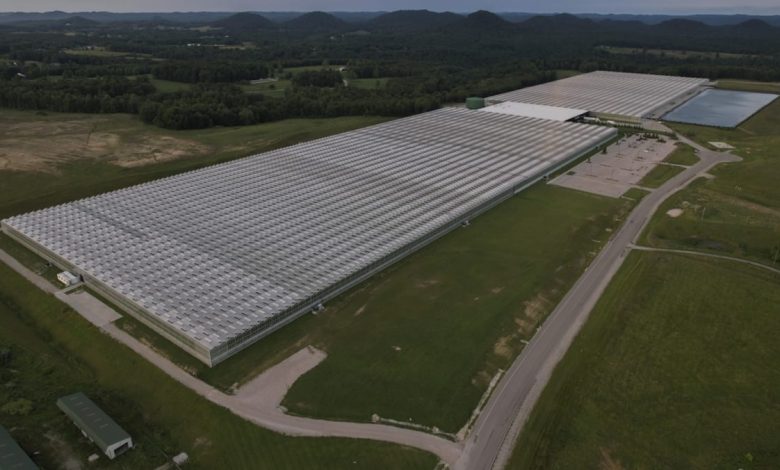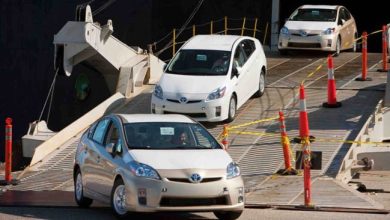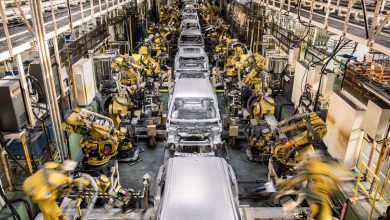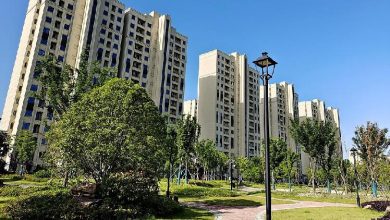The “greenhouse effect”: How an oft-touted climate solution threatens US agricultural workers

LITTLE TRAINING FOR THE MOST VULNERABLE
It was the summer of 2020 in Orange County, California when Emily Hernandez started her first job in a greenhouse. She recalled the humidity and “intense heat” she experienced 40 hours a week as she tried to swiftly weed and re-pot the “hundreds upon hundreds” of succulents she was tasked with.
The pressure to work fast gave her anxiety, and her back often strained from bending over. But the heat, she said, was the worst part.
Hernandez said in the five weeks she worked there, she never received heat safety training despite temperatures that could rise up to the high 80s. “It was kind of learning as you go,” Hernandez said.
Instead, safety and comfort tips came from colleagues: Bring a fan. And a chair. Keep one water bottle in the freezer and one with you always.
“There was really no concern for safety in that way,” Hernandez said. “When I did bring it up, there was a company meeting about not complaining about the heat.”
Universities with greenhouses do things differently. At the University of California, Davis, students, staff and researchers are required to take greenhouse safety training that cover heat illness protection, injury reduction, emergency guidance and the federal worker protection standard.
Most of the campus’ greenhouses automatically cool or heat the environment at certain temperatures, according to Bill Werner, lead greenhouse manager for UC Davis’ College of Agricultural and Environmental Sciences. On 100-degree days, researchers working in older greenhouses are encouraged to work early mornings, stay hydrated and take breaks in cooler areas. Various complexes also have shade and stations with cold potable water.
While research and commercial greenhouses share similar goals of creating optimal growing environments for plants, a major difference is the amount of time people spend in them.
Like Hernandez, agricultural workers often labour eight hours or more a day, five or more days a week inside commercial greenhouses. At UC Davis, people spend an average of 15 minutes to an hour daily inside greenhouses, said Werner, but can be in there for hours if they’re collecting data or setting up a project.
“I don’t think I’ve ever seen anybody here just eight hours straight,” he said.
CAN GREENHOUSES STILL BE A CLIMATE SOLUTION?
In what was supposed to be a “climate-resilient food system,” workers say temperatures frequently reached 45 degrees Celsius. That was inside facilities at AppHarvest, an ambitious startup backed by Martha Stewart with multiple massive tomato greenhouses in rural Kentucky that touted itself as a climate solution.
Workers say they saw colleagues carried out on makeshift stretchers, and dozens more helped outside on others’ shoulders.
“I started getting really sick from the heat. And my body started shutting down on me,” said one worker, speaking on condition of anonymity for fear of retaliation. “And when I passed out and went home that day, I’d just laid there, and I was thinking, like, ‘I can’t keep doing this.’”
It wasn’t just summer heat causing these conditions: several AppHarvest workers said the company was riddled with mismanagement. They said there were a couple iterations of a worker orientation, but that it was “boring and breezy” and didn’t adequately cover greenhouse safety. Some said they sometimes couldn’t keep water bottles in the greenhouse because they might knock against the plants and damage the fruit, or because it looked bad when visitors came through on tours.
One anonymous contract worker formerly with AppHarvest, speaking in Spanish, said the company’s greenhouses were “plagued by rats”.
AppHarvest, which has since declared bankruptcy, did not respond to a detailed list of questions about these problems, though their 2021 sustainability report featured a section devoted to employee wages, benefits, career paths and safety. “Nothing can be grown without the people that we have,” the report stated, quoting the senior manager of environmental health and safety at the time. “We must protect our greatest asset, which is people.”
Other indoor growing companies maintain that with the right management, greenhouse growing is a promising climate solution.
“You’ve got climate change that is just exacerbating issues for outdoor growers,” said Steve Bradley, president of Cox Farms, a greenhouse-based indoor growing company. He says that with greenhouses sheltering crops from extreme heat, his company has “decoupled the growing from these external weather patterns”.
Bradley said that his modernised greenhouses have the technology to be completely climate controlled.
Day temperatures in their current greenhouses range from about 21 to 29.5 degrees Celsius, and humidity levels average about 80 per cent, according to the company. Summer brings temperatures about 28 to 29.5 degrees Celsius, but when equipment fails, it can soar to 35 degrees Celsius. To account for excessive heat, they adjust workers’ schedules, starting them earlier in the morning, breaking mid-day during peak heat, and returning in the evening as temperatures cool, the company said.
Aaron Fields, vice president of agriculture at greenhouse-based vertical farming company Eden Green in Texas, said that temperatures in their greenhouses regularly hover between 21 to 27 degrees Celsius but can get hotter during the summer, sometimes above 32 degrees Celsius. A few years ago, they shifted their workers’ summer schedules to earlier in the day so they aren’t working inside at the hottest hours.
Fields added that it’s important to be trained to identify symptoms of heat stress, to work in a buddy system and to stay hydrated.
He thinks the startup culture of “high-tech” greenhouses, which can include leaders and founders without prior farming experience, has led some to miss the importance of working conditions. “Unfortunately, some of these were safety protections or the things that go unnoticed … those became the last priorities,” he said.
It’s all about establishing rules to protect workers, explained Young from Farmworker Justice. When temperatures are monitored; when workers get adequate breaks, water and training; when they aren’t trapped inside with pesticide residues too soon after application, then growing in greenhouses can be considered sustainable for humans and agriculture alike.
“A greenhouse can be a very healthy place to work,” Young said. “It’s sort of thinking about, how can we interact with the climate around us in a way that keeps people and the food that we’re eating healthy and safe?”
While technology and good practices exist to ensure workers are safe and comfortable in greenhouses, many can’t chose the environments they spend much of their days in.
“We don’t have the option to pick our work,” Mendoza said. “We have to accept what there is.”





